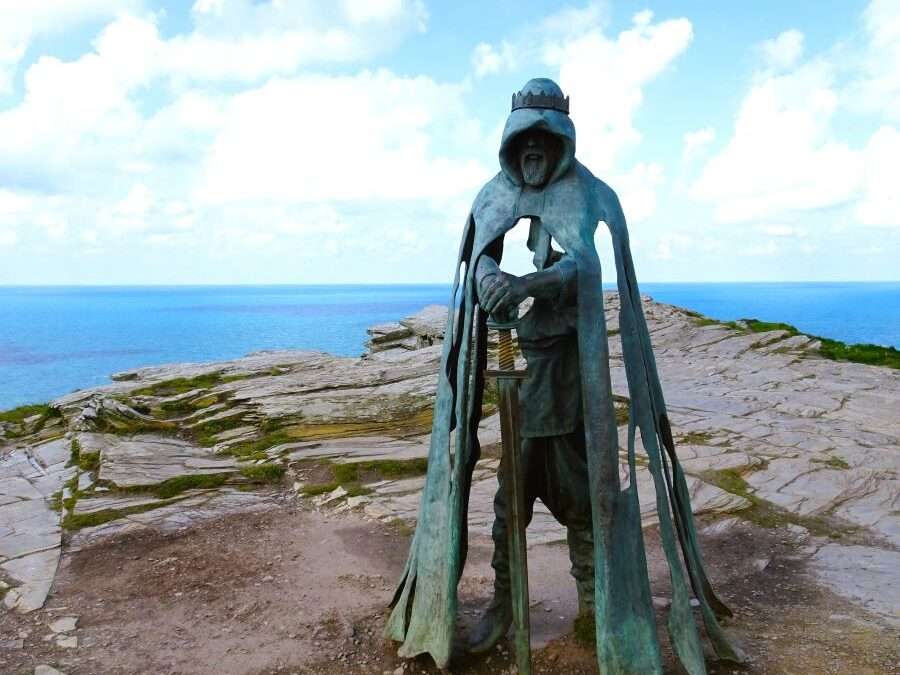Waves of excitement infused the air as we marched towards the ruins of Tintagel Castle, the turquoise-spangled ocean behind it.
It was bright and breezy, and Mr Word Loft and I embraced the scenery of another splendid location just down the road from the Bed and Breakfast accommodation where we stayed for a few days.
Bluebells, campions in red and white grow on the grassy escarpments, but the perfume from clumps of another tiny pearly wildflower smells divine. Elderflower, I guessed uncertainly. Making enquiries at the gift shop later, I was told it’s called Scurvy Grass. How could a pretty fragrant plant have such an unpleasant title? I’ve since discovered that it was taken aboard ships to cure the skin disease, Scurvy, as its spoon-shaped leaves are rich in vitamin C. Spoonwort is another name for the annual and perennial herb, and much more appealing.
The legendary stronghold is scattered across Tintagel island which is reached via a two-part cantilever bridge.
I was eager to see where King Arthur and his entourage, especially Merlin, had supposedly played out their lives as I joined throngs tramping over the 2019 carmine and grey walkway spanning a natural chasm.
It is evident many communities have lived and worked in the Area of Outstanding Beauty, and have done so for over 1,500 years.
Relics of stone habitats date back to the Dark Ages, while battlements, courtyards and gateways came later and originated from the Medieval Times.
From the Barbican, Camelot Castle Hotel views dominate on the opposite peninsula. Below that is the Beach Café, an elongated building; originally it was a silver and lead mines workshop. Further down the wharf is charming where slate was loaded onto boats from local quarries in the 19th and 20th centuries.
Heading on from the Barbican to the furthest outcrop, the Gallos sculpture is an impressive sight. It stands regally on trevillet slate terrain. The two-and-a-half metre-tall bronze conjures thoughts of historical kings as well as King Arthur.
At this vantage point, the stunning 360-degree panorama is breathtaking.
Merlin’s cave is on the beach below, and close to the café, so we took the steep path down under the bridge. While Mr Word Loft went further afield, I sat on a bench studying the vista. On the slopes above Merlin’s spellbinding den of wizardry, the tourists morphed into characters from Medieval literature and the ancient Cornish Kingdom of Dumnonia. They became traders throughout the ages with links to the Mediterranean, or the monks from an early Christian monastery. All, unwittingly leaving their mark for today’s sightseers to explore and value.
Until next time,
Sue. X

